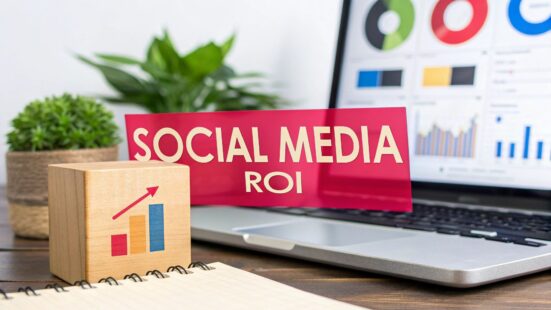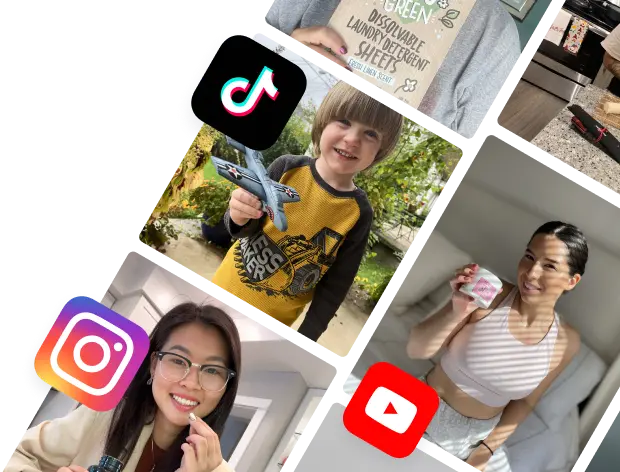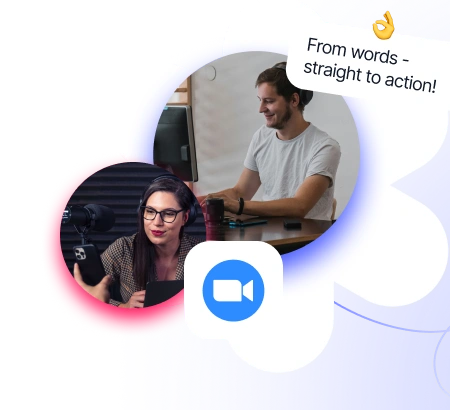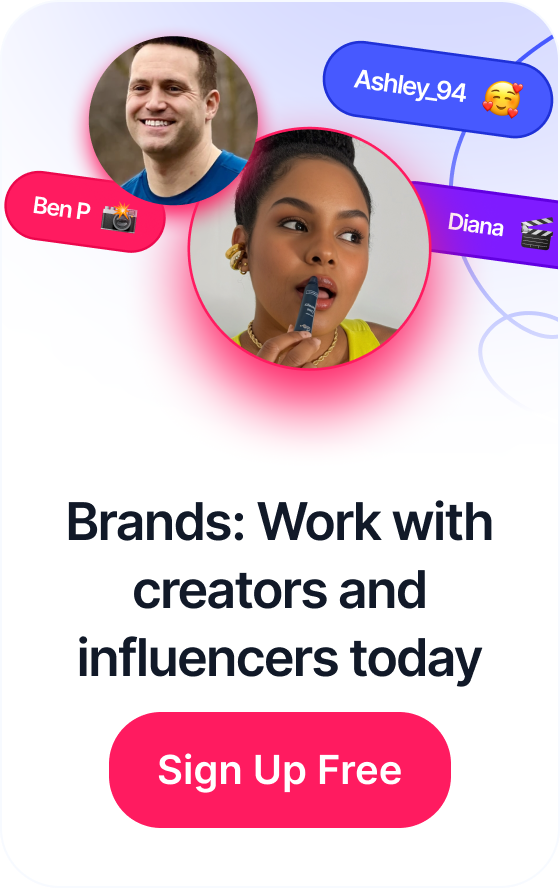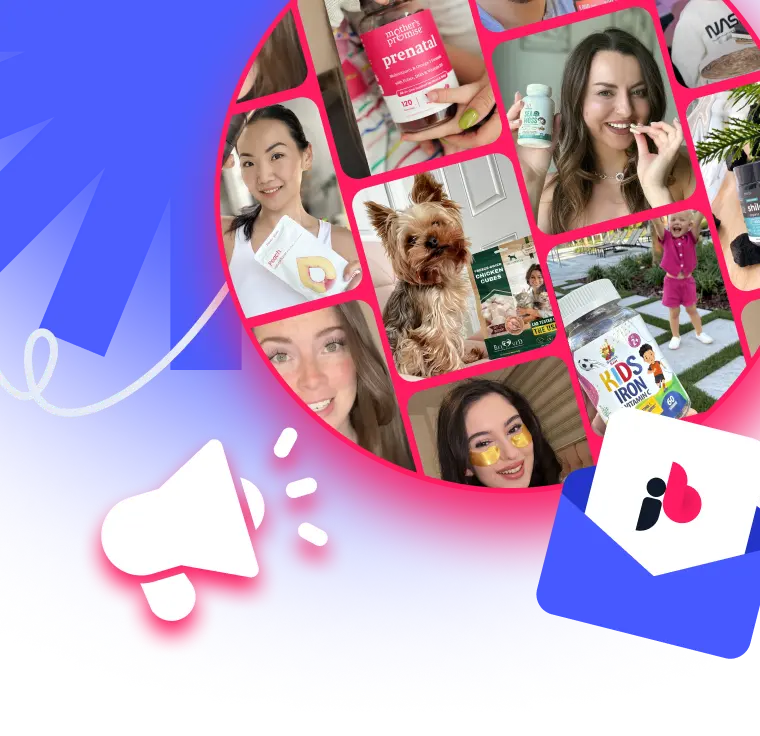 The Essential Influencer Agreement Contract Guide
The Essential Influencer Agreement Contract Guide
So, you’re pouring time, money, and creativity into your social media. How do you know if it's actually working? That’s where social media marketing ROI comes in. It's the ultimate measure of whether your efforts are paying off in real-world value, not just likes and shares. A positive ROI is your proof that the strategy isn't just making noise online—it's driving real business growth.
Table of Contents
Why Social Media ROI Is More Than Just Likes
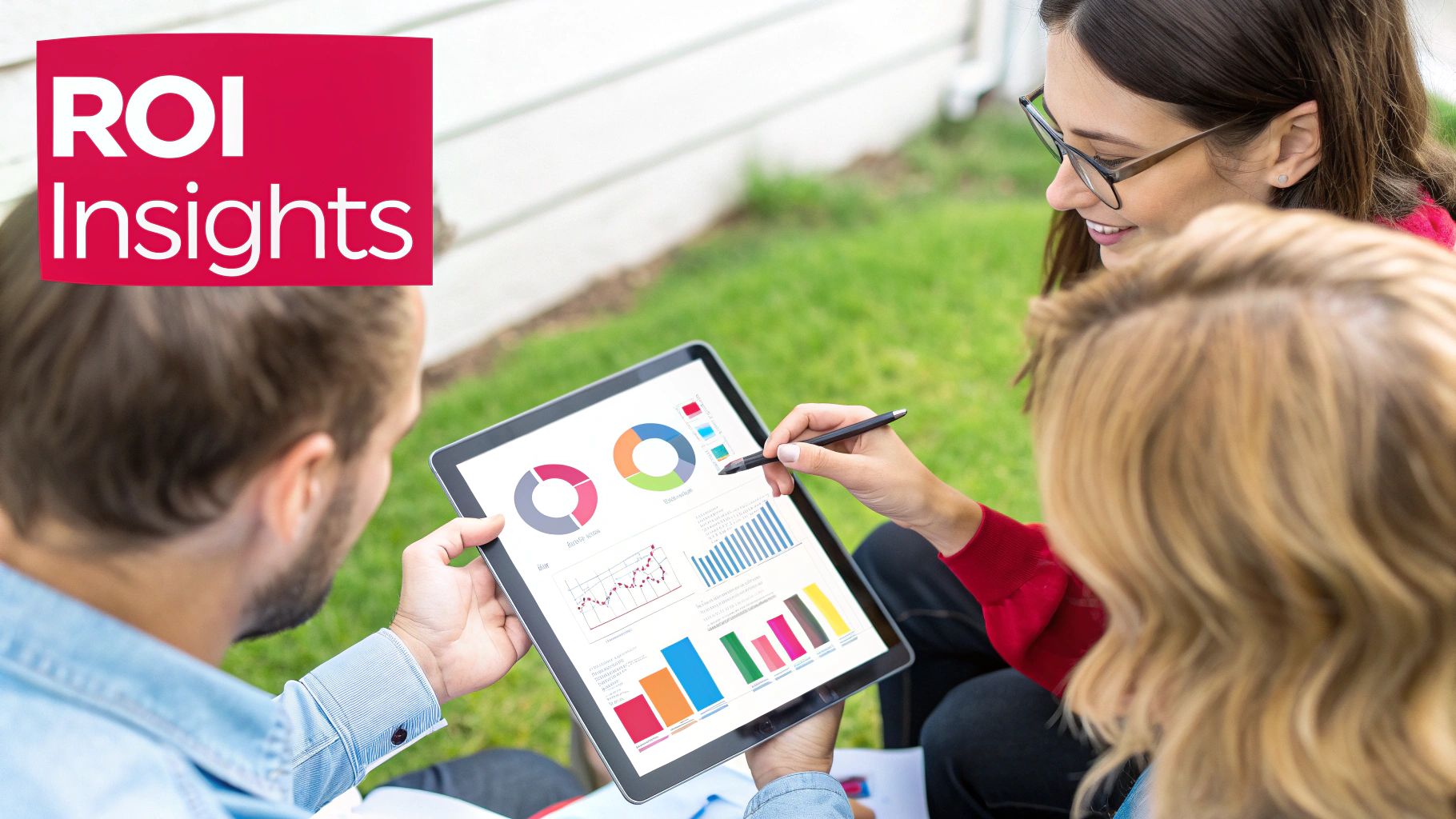
It’s so easy to get mesmerized by vanity metrics. High follower counts, a flurry of likes, and a surge in shares all feel great, but they don't directly deposit money into your bank account. While these numbers are good indicators of engagement, they're only one piece of the puzzle. True social media marketing ROI looks past the surface to connect your actions to what really moves the needle: your bottom line.
Think about it like tending a garden. Your investment—the seeds, water, fertilizer, and hours of labor—represents your ad spend, content creation time, and team resources. The harvest is your return. Just counting the leaves on your plants (the likes) won't tell you how much food you've grown. You have to weigh the actual harvest (sales, leads, sign-ups) against your initial costs to know if the garden was worth the effort.
Connecting Social to Business Outcomes
Measuring ROI is all about drawing a straight, undeniable line from a tweet, a Reel, or a TikTok clip directly to a tangible business result. This is how you justify budgets, prove your team's impact, and make smart decisions about where to focus next. Without it, you're just marketing in the dark and hoping for the best.
At its core, tracking social media ROI is about translating abstract campaign data into a clear financial story. It answers the one question every stakeholder really cares about: "Are we getting more value out of this than we're putting in?"
This shift in perspective—from chasing vanity metrics to creating real value—is what elevates a social media team from a "cost center" to a powerful revenue driver. It gives you the clarity to go all-in on what's working and confidently cut what isn’t.
The Economic Stakes of Getting It Right
The sheer scale of social media advertising highlights just how critical this is. In 2025, total ad spend is forecast to reach a staggering $276.7 billion. This shows the incredible amount of money brands are investing here. By 2030, a massive 83% of that spend is projected to come from mobile, showing exactly where your audience's attention is glued. You can dig deeper into these figures with the latest social media statistics.
With this kind of money on the table, tracking your ROI isn't just a good idea—it's essential for survival. It helps you:
- Justify Marketing Spend: Show the C-suite exactly how their investment is fueling growth.
- Optimize Your Strategy: Pinpoint which platforms and content formats are actually delivering results.
- Prove Your Team’s Value: Demonstrate the direct contribution your social media efforts make to the company's biggest goals.
Ultimately, a solid grasp of your social media marketing ROI allows you to operate with precision and confidence. It transforms your strategy from one based on hope to one built on data-backed certainty, paving the way for predictable, sustainable growth.
To really figure out your social media ROI, you have to stop guessing and start measuring. This means looking past the surface-level numbers and zeroing in on the metrics that tie your social activities to actual business results. Think of yourself as a detective. Every metric is a clue, and it's your job to follow the trail from a click or a share all the way to a sale.
The data you're looking for isn't just a random collection of numbers. It fits into clear categories that tell a story about your customer's journey. By tracking metrics across reach, engagement, and conversions, you can paint a full picture of your performance and see exactly where your strategy is working—or where it's falling flat.
Measuring Your Audience Reach
Reach metrics tell you how many eyeballs are on your content. While things like impressions and follower count are part of the story, the real goal is to understand the quality and value of that visibility. It’s not just about being seen; it’s about being seen by the right people.
Key reach metrics include:
- Impressions: The total number of times your content popped up on a screen, whether it was clicked or not. This is your go-to for top-of-funnel brand awareness.
- Reach: The number of unique people who saw your content. This gives you a much better sense of your actual audience size, since impressions can count multiple views from the same person.
- Audience Growth Rate: How fast you’re gaining new followers, measured as a percentage. This helps you track the momentum of your brand’s presence.
These numbers are the foundation. If your reach is weak, your chances to engage and convert are automatically capped.
Tracking Audience Engagement
Engagement is where passive scrollers turn into active participants. These metrics are a signal that your content is hitting the mark, building a community, and creating brand loyalty. High engagement is almost always a strong sign of future conversions.
Engagement is the bridge between just being seen and actually being profitable. It’s the moment a potential customer leans in, pays attention, and shows interest, making them far more likely to take the next step.
Some of the most important engagement metrics are:
- Likes, Comments, and Shares: The most direct signs of audience interaction. Shares are especially golden because they’re basically a free, organic endorsement that expands your reach.
- Click-Through Rate (CTR): The percentage of people who saw your post and clicked a link in it. This is a critical metric for getting traffic to your website or landing pages.
- Video Views and Completion Rate: For video, this tells you not just how many people started watching, but how many were hooked enough to stick around until the end.
A solid engagement rate tells you that your content strategy is in sync with what your audience wants to see—a huge step toward a positive social media ROI.
Connecting Actions to Conversions
This is where the rubber really meets the road. Conversion metrics track the ultimate goal of most marketing campaigns: getting people to take a specific, valuable action. These are the numbers that most directly translate into revenue and prove the financial impact of your social media efforts.
To measure conversions well, you have to track:
- Conversion Rate: The percentage of users who take the action you want (like making a purchase or signing up for a newsletter) after clicking a link in your social post.
- Cost Per Click (CPC): The amount you pay for every single click on your social media ads. A lower CPC means you're spending your ad money more efficiently.
- Cost Per Acquisition (CPA): The total cost to get one new customer through a campaign. This is a powerful ROI metric that ties your spending directly to bottom-line results.
These metrics close the loop, drawing a clear line from a post on social media to real business growth. To get an even clearer picture of how these all fit together, this table breaks it down.
Key Metrics for Social Media ROI Tracking
This table organizes the most important social media metrics by their function. Use it to make sure the data you’re tracking actually aligns with your specific business goals.
| Metric Category | Key Metrics | What It Measures | Relevance to ROI |
|---|---|---|---|
| Reach | Impressions, Reach, Audience Growth Rate | The size and growth of your potential audience. | Sets the upper limit for potential engagement and conversions. |
| Engagement | Clicks, CTR, Likes, Shares, Comments | How audiences interact with your content. | Indicates content effectiveness and audience interest, a precursor to conversion. |
| Conversions | Leads, Sales, Sign-Ups, Conversion Rate | The number of users who complete a desired action. | Directly measures the revenue and value generated from your investment. |
By breaking down your tracking this way, you move from just collecting data to gathering actionable intelligence. Each category gives you a different piece of the ROI puzzle, helping you see the full impact of your social media strategy.
Right, so you've got a handle on the metrics that matter. Now for the million-dollar question: how do you actually calculate your social media ROI?
It sounds a lot more complicated than it is. At its core, it's about putting those numbers to work with a simple formula. This calculation cuts through the noise and shows you exactly what you’re getting back for every dollar you put in.
Think of it like the ultimate receipt for your marketing budget. It stacks up all your costs against all the money you made and spits out a simple percentage. That percentage tells you, without a doubt, whether you came out ahead.
The classic formula is beautifully straightforward:
Social Media ROI (%) = (Return – Investment) / Investment * 100
Let's unpack what goes into each part of that equation so you know exactly which numbers to plug in.
Defining Your Investment
First things first: your investment is way more than just your ad spend. This is one of the most common mistakes people make, and it leads to a falsely rosy picture of your ROI. To get a true, accurate number, you have to account for every single penny that went into your social media efforts.
Your total investment should include:
- Ad Spend: This is the obvious one—the cash you pay directly to platforms like Meta, TikTok, or LinkedIn to run your campaigns.
- Tool and Software Costs: Think about the subscription fees for your social media management tools (like JoinBrands), analytics software, or even design tools like Canva.
- Content Creation Expenses: Did you pay for a photoshoot? Hire a video editor? Compensate user-generated content creators? All of that goes in here.
- Labor Costs: The salaries or hourly rates of your team are a real cost. You'll need to calculate the portion of their time spent on a specific campaign. This includes your social media managers, community managers, and strategists.
Add all of that up, and you've got the "Investment" part of the formula. It’s the total price you paid to play the game.
Defining Your Return
Now for the fun part. Your return is the total value you got back from that investment. For most businesses, especially in e-commerce, the clearest measure is the revenue generated directly from social media. This means sales that came through social commerce features or website purchases you can trace back to a social media link (hello, UTM parameters!).
This is where a good dashboard becomes your best friend. It helps you see how engagement connects to real conversions.
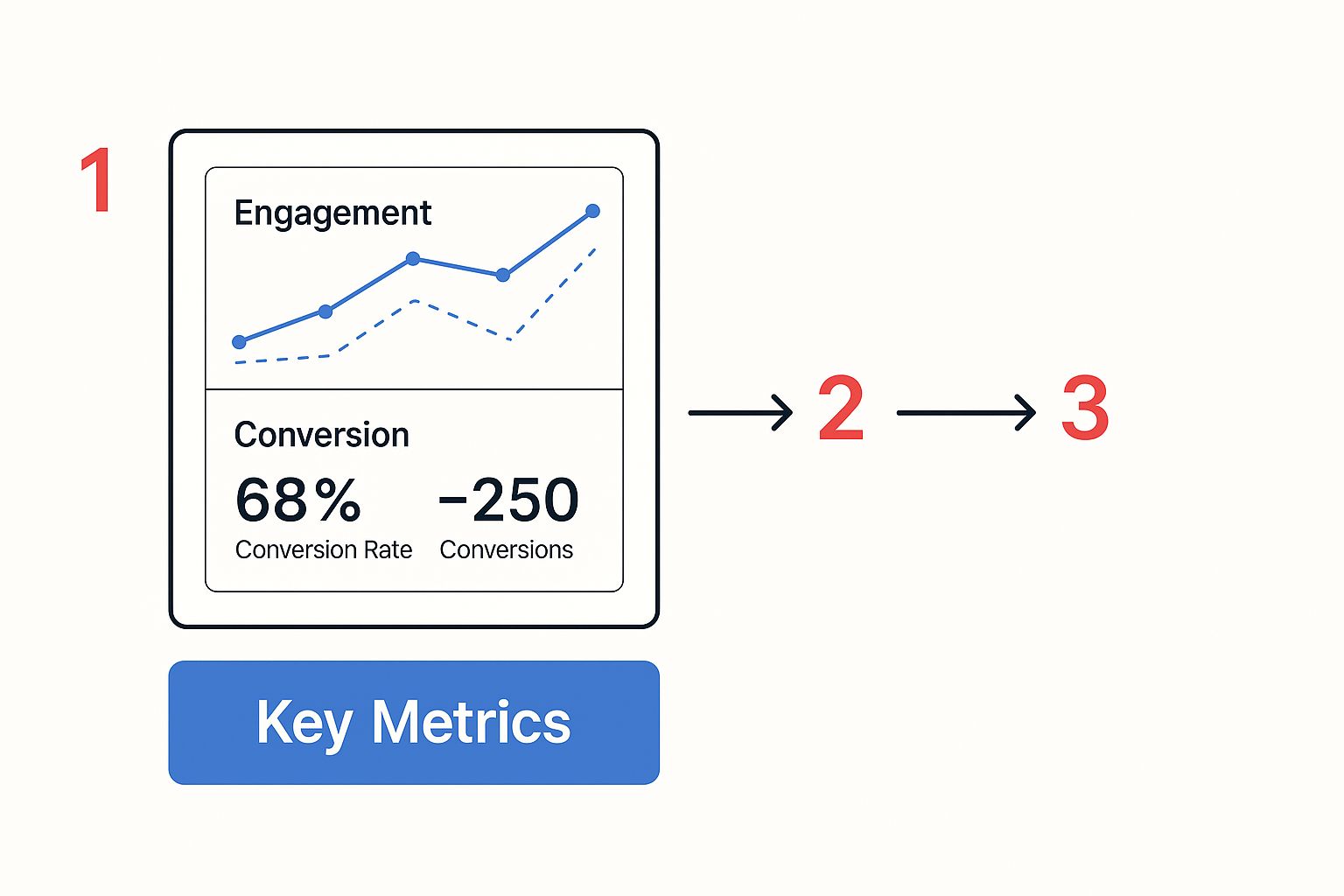
Being able to visualize your key metrics like this makes it so much easier to spot which posts are driving valuable actions and pinpoint where your returns are coming from.
Assigning Value to Non-Financial Goals
But what if direct sales isn't your main goal? Plenty of campaigns are built around things like lead generation. In that case, you just need to assign a monetary value to your return.
A super common way to do this is by calculating the value per lead. Dig into your historical data. Let's say you know that, on average, 1 out of every 10 leads turns into a paying customer, and your average customer lifetime value is $500. That means each lead is worth $50 to your business ($500 / 10).
Just multiply the number of leads your social campaign generated by that $50 value, and voilà—you have your total return.
Putting It All Together: A Practical Example
Let's walk through a real-world scenario. Imagine an e-commerce brand selling custom phone cases. They just ran an Instagram campaign to launch a new product line.
The Investment:
- Instagram Ad Spend: $1,500
- Creator Payments (for UGC): $500
- Social Media Manager's Time (estimated): $300
- Total Investment: $2,300
The Return:
- The campaign generated $6,800 in direct sales, tracked meticulously through Instagram Shopping and UTM links.
- Total Return: $6,800
Now, let's plug these numbers into our trusty formula:
- Return – Investment: $6,800 – $2,300 = $4,500
- Divide by Investment: $4,500 / $2,300 = 1.956
- Multiply by 100: 1.956 * 100 = 195.6%
The final social media marketing ROI for this campaign is a whopping 195.6%. What does that mean in plain English? For every single dollar the brand invested, it earned back $1.96 in profit.
Now that's a powerful, definitive number. It proves the campaign was a huge success and gives the brand a solid benchmark for everything they do moving forward.
Figuring out your social media ROI is a great first step, but improving it is where you really start to see the payoff. Once you've got that baseline number, you can get to work with specific, data-backed strategies that make every dollar you spend go further. This isn't about throwing things at the wall and seeing what sticks—it's about smart testing, listening, and tweaking to systematically grow your returns.
Think of your social media campaigns less like finished products and more like ongoing experiments. You have to constantly ask what's working and why. This mindset of continuous improvement is what separates brands with flat results from those seeing real, exponential growth.
A/B Test Everything Relentlessly
The single most effective way to pump up your ROI is to stop guessing what your audience wants and start letting them show you. That's what A/B testing is for. The process is simple: you create two or more versions of an ad or post, change just one thing at a time, and see which one gets better results.
It’s basically the scientific method for your marketing. By isolating one variable, you can figure out exactly what drives people to click and buy.
- Test Your Creative: Pit different images, videos, headlines, and call-to-action (CTA) buttons against each other. Does a blue "Shop Now" button work better than a green one? Does a raw, user-generated photo get more love than a polished studio shot?
- Test Your Audience: Don’t just blast your ads to one giant group. Split your audience into different ad sets based on demographics, interests, or lookalike models. You might find a hidden niche that converts like crazy, letting you focus your spend for way more bang for your buck.
For example, a clothing brand could test an ad with a model wearing a new dress against another showing a cool flat-lay of the same dress. The results give you undeniable data on which visual style connects with people, directly informing how you build your next campaign for better performance.
Refine Your Content with Social Listening
Your audience is out there, right now, talking about what they need, what frustrates them, and what they want. Social listening is how you tap into those conversations to find pure gold. It’s more than just tracking brand mentions; it’s about digging into the why behind what people are saying.
By keeping an ear to the ground and monitoring conversations in your industry, you can spot content gaps, get ahead of customer needs, and deal with problems before they blow up. It shifts your content strategy from simply reacting to proactively leading.
In fact, social listening is a game-changer for building confidence in your social media marketing ROI. A 2025 survey of over 3,800 marketers found that those who use social listening are way more confident in their ability to prove ROI. Why? Because listening provides real-time data that uncovers sales leads and product ideas, moving you far beyond vanity metrics. You can learn more about this connection from Hootsuite's in-depth trend report.
Optimize Your Landing Pages for Conversions
Getting the click on social media is only half the battle. If that click leads to a slow, clunky, or confusing landing page, you’ve just wasted your money and killed your ROI. The journey from their social feed to your website has to feel effortless.
To get the most out of every click, make sure your landing pages are:
- Mobile-First: The vast majority of people scrolling through social media are on their phones. Your page has to load fast and look fantastic on a small screen. No excuses.
- Message-Matched: The headline, offer, and overall vibe of your landing page should perfectly match the ad they just clicked. Any disconnect creates instant confusion and makes people bounce.
- Focused on a Single Goal: A great landing page has one job and one clear call-to-action. Don't clutter it with extra links or competing offers. Make it dead simple for visitors to know what you want them to do next.
Bring Customers Back with Retargeting
Most people who click your ad won't be ready to buy on their first visit. That’s just human nature. Retargeting is your secret weapon for bringing those interested-but-not-quite-ready users back into the fold. By showing tailored ads specifically to people who have already visited your site or engaged with your content, you stay fresh in their minds.
This strategy is incredibly powerful for boosting social media marketing ROI because you're marketing to a "warm" audience that already knows you. The result is almost always a higher conversion rate and a lower cost to acquire each customer, which directly juices your bottom line.
Using Social Commerce to Simplify ROI Tracking
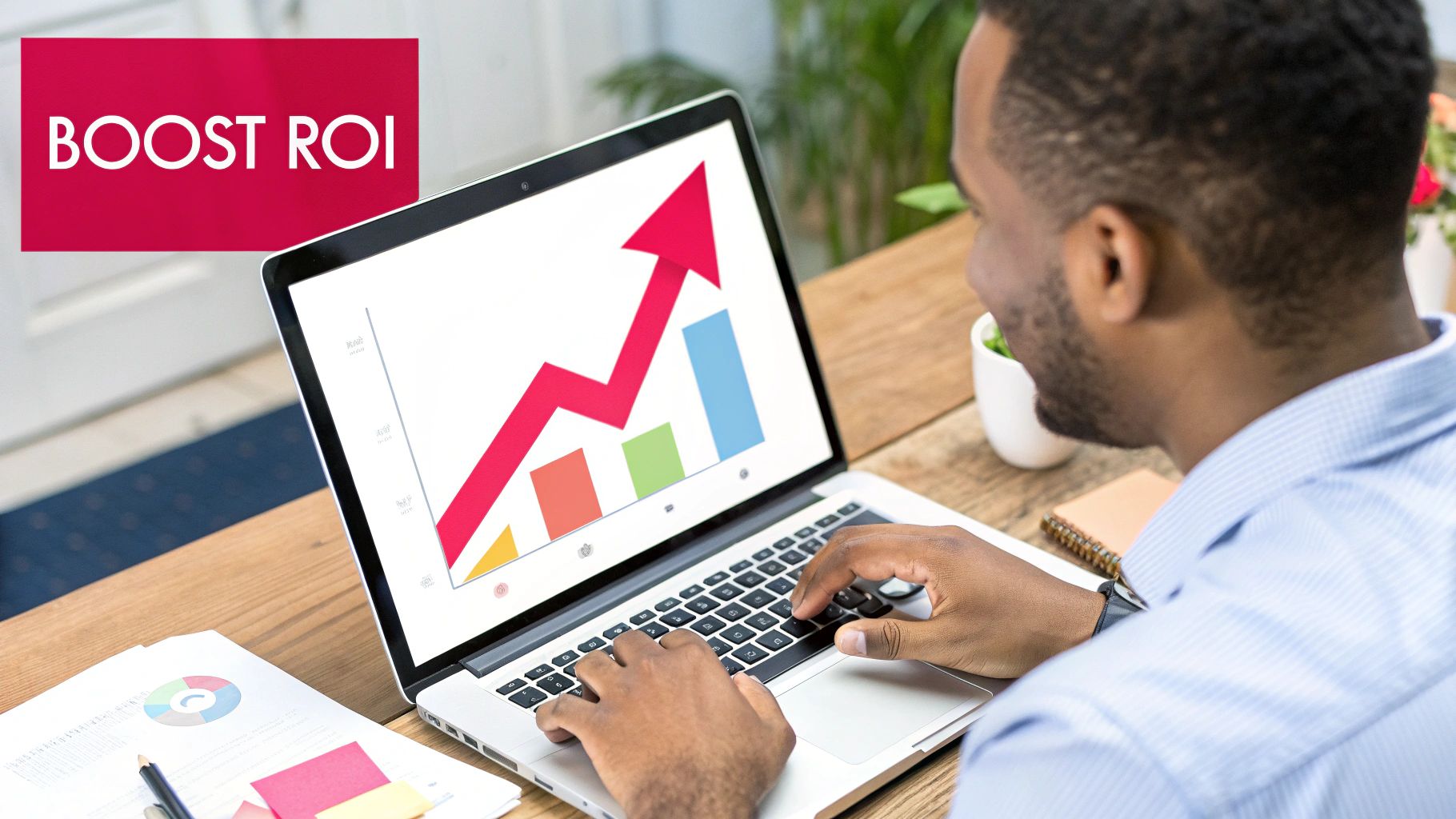
Let's be honest, calculating your social media marketing ROI gets a whole lot easier when the entire journey—from discovery to purchase—happens in one neat little package. That’s exactly what social commerce brings to the table. This ability for customers to buy your stuff directly inside social media apps is a huge win for brands that need clear, direct proof of what’s working.
Think about the old customer journey. It was often a long and winding road. Someone sees your post, clicks a link, lands on your website, gets distracted by a cat video, and maybe, just maybe, comes back later to buy. Trying to tie that final sale back to the original social post could feel like detective work. Social commerce basically solves the case for you.
From Feed to Checkout in Seconds
Platforms like Instagram Shopping, Facebook Shops, and TikTok Shop have turned social feeds from simple scrolling galleries into full-blown interactive storefronts. This completely changes the game by shortening the customer journey and cutting out the friction that makes potential buyers bail.
When someone can tap a product tag on a photo and check out without ever leaving the app, attributing that sale becomes crystal clear. No more guesswork.
This direct path delivers some key perks for tracking ROI:
- Reduced Friction: Fewer steps between seeing and buying almost always means higher conversion rates. It's just that simple.
- Clearer Attribution: Sales data is now directly tied to the exact post or ad that drove it.
- Enhanced User Experience: A silky-smooth, in-app buying process keeps customers happy and makes them more likely to come back for more.
The real beauty of social commerce is its simplicity. It collapses the sales funnel, turning a passive scroll into an active purchase with incredible efficiency. This makes the "Return" part of your ROI formula more accurate than ever.
The Power of Authentic Content
Social commerce isn't just for your own branded posts; it’s a powerhouse when you pair it with authentic content from creators. When an influencer or a UGC creator posts about your product with a shoppable tag, it’s the perfect blend of a genuine recommendation and an immediate chance to buy. This is how influencer marketing stops being just an awareness play and becomes a direct sales driver.
The data backs this up, big time. The social commerce industry is growing at a compound annual rate of 13.7% and is on track to blow past $1 trillion in value by 2028. What’s more, a massive 86% of consumers make at least one purchase each year influenced by social media personalities, proving the direct sales muscle of creators.
These numbers aren't just trends; they signal a fundamental shift in how people shop. If you want to dive deeper into the financial impact, check out these social media marketing insights.
By leaning into these tools, you’re not just making it easier for people to buy from you. You’re creating a clean, undeniable data trail that makes measuring and proving your social media ROI simpler and stronger.
Common Questions About Social Media ROI
As you start tracking your social media marketing ROI, you're bound to run into some practical questions. It happens to everyone. Getting those sorted out is what builds confidence and makes sure you're actually measuring what matters.
Think of this section as your quick-reference guide for those "what do I do when…" moments. We'll cut through the theory and get right to the practical answers that keep you moving forward.
How Often Should I Calculate My ROI?
Finding the right rhythm for calculating your ROI is all about timing. There's no single magic number, but a great rule of thumb is to sync your reporting schedule with your campaign's pace.
For your ongoing, always-on social media presence, a monthly calculation is the sweet spot. It's frequent enough to catch trends as they're happening, so you can double down on what works or pull back on what doesn't before you burn through your budget. This also gives you a steady stream of data for solid month-over-month comparisons.
When it comes to shorter, time-sensitive campaigns—like a holiday sale or a product launch—it's best to calculate the final ROI right at the end. That gives you a single, clear verdict on how that specific push performed. The most important thing? Just be consistent. Pick a schedule and stick to it.
How Do I Measure ROI for Brand Awareness?
But what about when sales aren't the main goal? This is a huge, and very common, question for anyone running brand awareness campaigns. Just because you can't tie it directly to a sale doesn't mean you can't measure its return. The trick is to assign a realistic monetary value to your awareness metrics.
First, you need to track metrics like reach, impressions, and your brand's share of voice. From there, you can figure out your earned media value (EMV).
Earned Media Value is basically an estimate of what you would have paid to get the same level of visibility through paid ads. It puts a dollar figure on your organic success.
For example, let's say your latest organic campaign reached 100,000 people. If you know your average cost per thousand impressions (CPM) on paid ads is $10, then your EMV for that campaign is $1,000. It's not cash in your pocket, but it’s a powerful way to show the financial value your awareness efforts are really creating.
What Common Mistakes Should I Avoid?
When you're calculating social media ROI, a few common slip-ups can throw off your numbers and give you a completely skewed picture of what's going on. Steer clear of these, and you'll be in much better shape.
- Focusing on Vanity Metrics: This is mistake number one. Getting excited about likes and follower counts is fine, but they're meaningless unless you can connect them to real business outcomes like leads or revenue.
- Forgetting Hidden Costs: Your true ROI has to include all your investments. It's easy to forget things like your team's salary, software subscriptions, or the cost of creating content. Leaving these out will give you an artificially high ROI that isn't real.
- Making Unfair Comparisons: Don't beat yourself up by comparing your results to a company in a totally different industry. Their margins, customer value, and buying cycles are completely different from yours. Your first and most important benchmark should always be your own past performance.
Ready to stop guessing and start seeing real returns from your social media? JoinBrands connects you with over 250,000 creators, including TikTok Shop Affiliates and UGC producers, to create authentic content that drives sales. Streamline your entire workflow, from creator matching to campaign tracking, all on one platform. Amplify your social presence and accelerate your sales with JoinBrands today!
